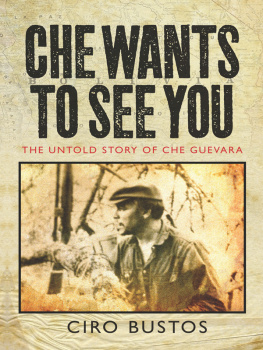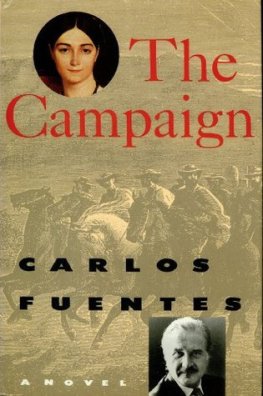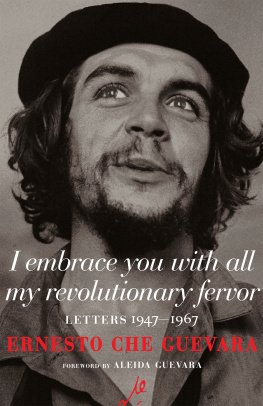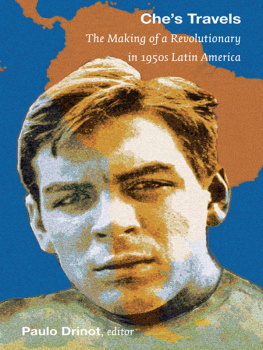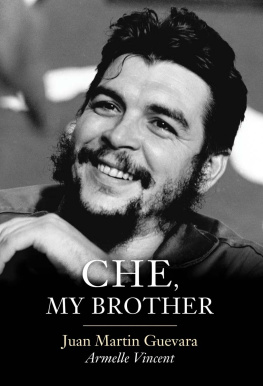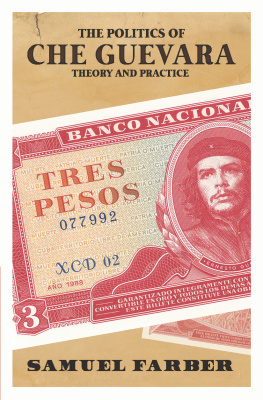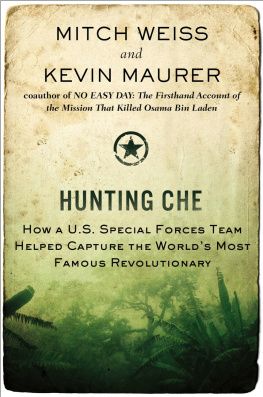
CHE WANTS TO SEE YOU
THE UNTOLD STORY OF CHE IN BOLIVIA
CIRO BUSTOS
Translated by Ann Wright
With an Introduction by Jon Lee Anderson

This English-language edition published by Verso 2013
Translation Ann Wright 2013
First published as El Che Quiere Verte
Javier Vergara 2007
All rights reserved
The moral rights of the author have been asserted
Verso
UK: 6 Meard Street, London W1F 0EG
US: 20 Jay Street, Suite 1010, Brooklyn, NY 11201
www.versobooks.com
Verso is the imprint of New Left Books
ISBN-13: 978-1-78168-096-4
British Library Cataloguing in Publication Data
A catalogue record for this book is available from the British Library
Library of Congress Cataloging-in-Publication Data
Bustos, Ciro Roberto.
[Che quiere verte. English]
Che wants to see you : the untold story of Che in Bolivia / Ciro Bustos; Translated by Ann Wright; With an Introduction by Jon Lee Anderson.
pages cm
This English-language edition published by Verso 2013. First published as El Che Quiere Verte.
Includes index.
ISBN 978-1-781-68336-1 (e-book)
1. Guevara, Che, 1928-1967. 2. GuerrillasBoliviaHistory20th century. 3. BoliviaHistory1938-1982. I. Title.
F2849.22.G85B8713 2013
980.035092dc23
2013005819
Typeset in Fournier by Hewer UK Ltd, Edinburgh
Printed in the US by Maple Vail
To Ana Mara
To Paula and Andrea
To the memory of Avelino
Many people survived that combat, and they are all invited to write their memoirs, and add their experiences to our knowledge of those events. We ask only that, when telling their story, they do not deviate from the truth, or say something incorrect just to clarify or magnify a personal position or pretend they had been in some particular place.
Ernesto Che Guevara,
Prologue to the Diary of a Revolutionary War
Then, in Bolivia, there were some Argentines, like Tania who was actually German although she had been born in Argentina and Ciro Roberto Bustos whom Che had known for a long time. Che always talked a lot about El Pelao. I met Bustos in Bolivia.
Ches Teachings, interview with Harry Villegas Tamayo (Pombo),
by Nestor Kohan, 11 October 2003
When a man is born, he can choose one of three different paths. If he chooses the one on the right, the wolves devour him; if he chooses the one on the left, he will devour the wolves; if he continues straight on, he will devour himself.
Anton Chekhov
Moreover, we do not know if the universe belongs to the real world or fantasy.
Jorge Luis Borges
I want you to tell me what Tania said when she met you in Crdoba.
That you wanted to see me, I replied.
No, no. I want you to tell me exactly what she said. In her own words.
Ah, well. She said, Che wants to see you.
Contents
by Jon Lee Anderson
By Jon Lee Anderson
It has been nearly five decades since the epic life-and-death story of the Argentine-born revolutionary Ernesto Che Guevara entered into the modern literary canon. The posthumously published diary of the literate, handsome young man who sought to bring socialism to the world through armed revolution and died doing so in Bolivia in 1967 rapidly became an international cult classic, a tragic new bible for a rebellious generation. The unavoidable parallels between the end of Ches life and the mythologized passion of Christ made his story all the more potent, helping to ensure his legacy as the ultimate symbol of sixties idealism. Today, Che Guevaras face is one of the most widely reproduced images in the world, universally recognized as an icon of youthful defiance against orthodoxy. In his adoptive homeland of Cuba, where the Castro revolution has endured for over fifty years, Che has become the emblematic patron saint of its officially cherished socialist principles. To millions of youngsters everywhere, meanwhile, Che lives, as the old slogan goes, if only on their T-shirts, while others seek even now to emulate his example on new battlefields. Not surprisingly, for the few surviving men and women who fought under Ches orders, life has never been the same.
Of the fifty-one guerrillas of various nationalities who joined Che in Bolivia, most were either killed in action or, like himself, executed after being captured. Only three out of the original eighteen Cubans made their way home again. The two Peruvians died. Out of twenty-seven Bolivian fighters, only seven survived. Most of them were captured and imprisoned; several switched sides and worked to apprehend their former comrades. Every war has its contingent of traitors.
There were three Argentine guerrillas including Che, but only one survived. He was Ciro Roberto Bustos, a young artist-turned-revolutionary, and the author of this memoir. Bustos was already a key operative in Ches fledgling guerrilla network in Argentina, when, in early 1967, Che summoned him to ancahuaz, his new, secret guerrilla base camp in south-eastern Bolivia. Che himself had only been there a few months. ancahuaz was supposed to be the training ground and staging post for a future Latin American guerrilla army that would spearhead a continental revolution against US-backed imperialism in the hemisphere. Once a Bolivian foco was established, the cadres from Peru, Argentina, and neighbouring countries would irradiate outwards, taking their revolutions to their homelands. Ches idea was to spark off two, three many Vietnams simultaneously, overwhelming the Americans capability to suppress them. In trying to do so, their imperial system would be weakened and destroyed once and for all. Che intended to lead the future Argentine foco himself.
Unfortunately for Che, the existence of ancahuaz was discovered by the Bolivian army prematurely, while it was still in the embryonic stage, and while he was away, on a gruelling, six-week training march through the wilderness with his small group of volunteers. This setback coincided with Bustoss arrival in ancahuaz. He was accompanied by a young Frenchman, Rgis Debray, a Marxist theoretician who had just published Revolutionin the Revolution? a theoretical treatise on the very guerrilla strategy that Che was putting into practice in Bolivia. Debray had come to meet Che and to receive his instructions on creating an international solidarity campaign on behalf of the Bolivian revolutionary cause. Bustos was there to confer with Che on how best to proceed with the Argentine armed underground. A previous attempt at starting a guerrilla foco, in which Bustos had participated, had failed catastrophically three years earlier. Bustos had been a lucky survivor.
Now, the authorities discovery of the guerrilla presence at ancahuaz had triggered an early initiation of hostilities. As Bolivias army sent in troops, and also warplanes, to attack them, Che and his men were forced to go on the run. It was an abrupt end to Ches hopes for a stealthy, well-organized beginning to his ambitious new revolutionary project. When the enormity of the fiasco dawned on him, Che remarked with characteristic fatalism: So, the war has begun.
As Che broke up his fighters into two smaller groups in order to escape the army dragnet, Bustos and Debray hiked out of the battle zone in the hopes of slipping away undetected and carrying on with their respective missions. They were immediately arrested by soldiers in Muyupampa, the first community they came to. It was April 1967.
Next page
